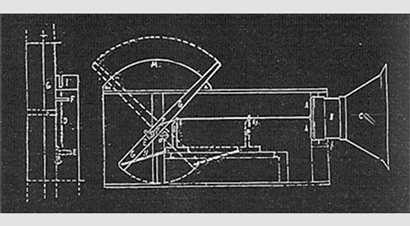Project Inspiration: A Brief History of Intonarumori

For examples of urbanSTEW’s Intonrumori go here: Intonarumori – urbanSTEW
The Intonarumori came from a futurist art movement fathered by experimental painter and composer Luigi Russolo. Russolo was considered to be the first “noise artist.” In 1913 he wrote L’Arte dei Rumori, translated as The Art of Noises. In this Russolo stated that the industrial revolution had given modern men a greater capacity to appreciate more complex sounds. He found traditional melodic music confining and envisioned noise music as its future replacement. Russolo’s Art of Noisesclassified “noise-sound” into six general groups:
- Roars
- Whistles
- Whispers
- Screeches
- Bangs
- Voices of animals and people
Intonarumori machines were designed to recreate the industrials sounds of the early 20th century. Shaped like a box with a speaker on the front face, performers could generate sounds by manipulating levers, knobs, and buttons. Futurist composers created symphonies for the machines, although early performances were often met with disapproval and even fist fights. Since the Italian Futurist movement, many people have created their own Intonarumori machines, often with an open or translucent side so that the internal workings of the device are visible.
urbanSTEW’s Noise Machines:
Russolo built noise machines to recreate the sounds of the Industrial Revolution, so in honor of the 100 year anniversary of The Art of Noises, urbanSTEW is building noise machines to recreate the sounds of our current Digital Revolution. The final installation is a set of six machines, one for each of the classified “noise-sounds” found in Russolo’s manifesto. By playing with simple buttons, cranks, and levers users can create and manipulate sounds that are a familiar to our current digital soundscape.



